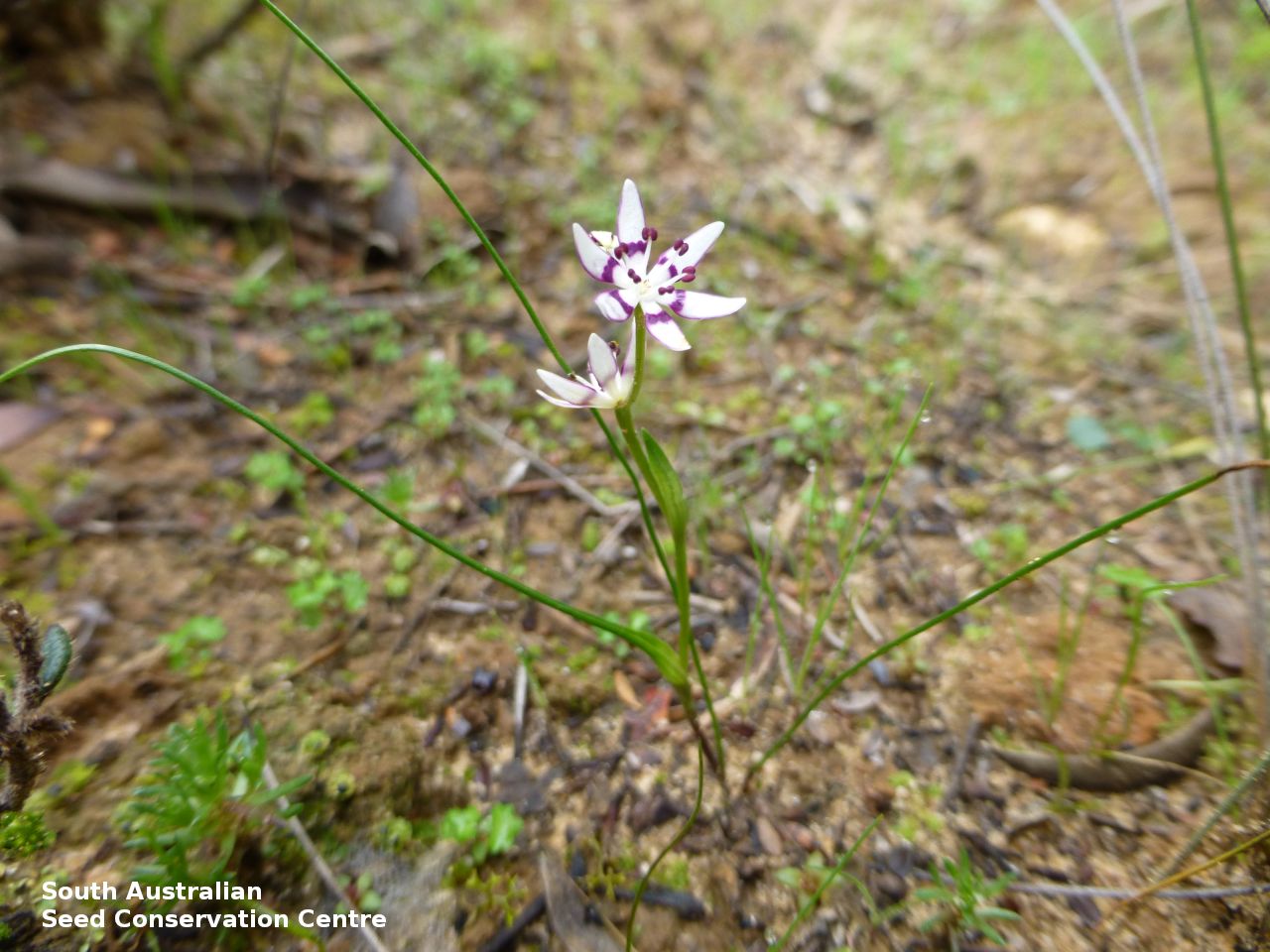
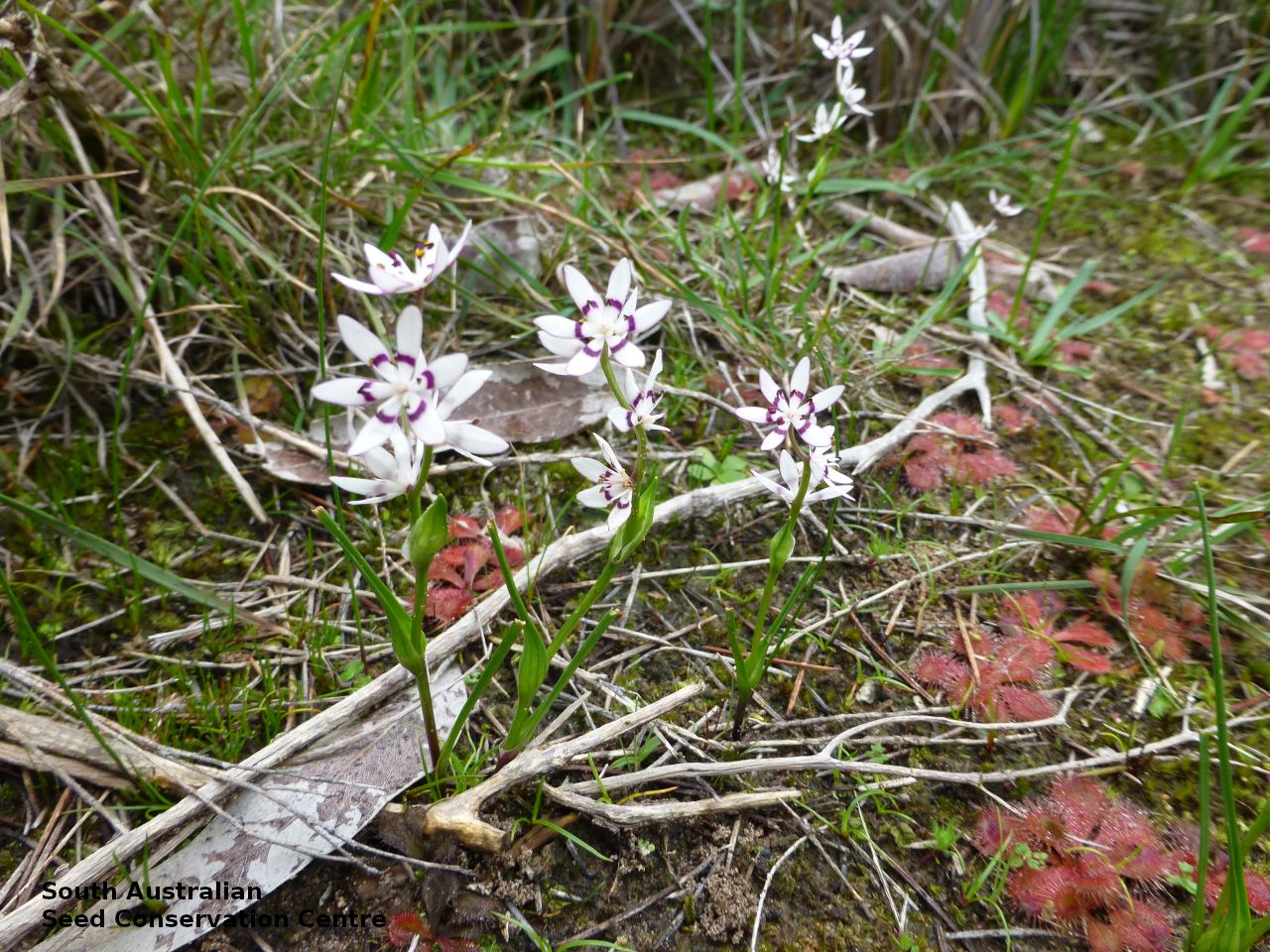
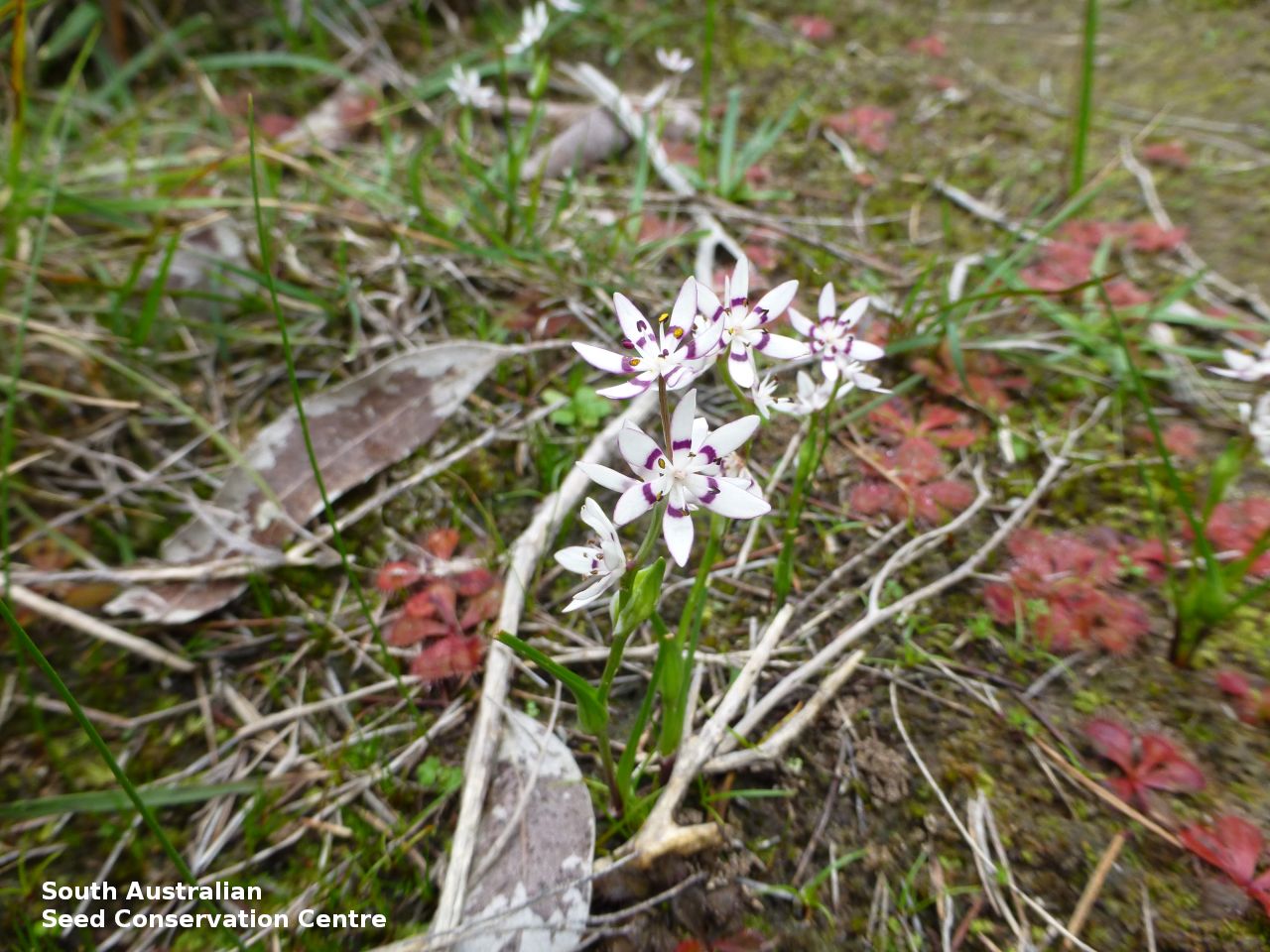
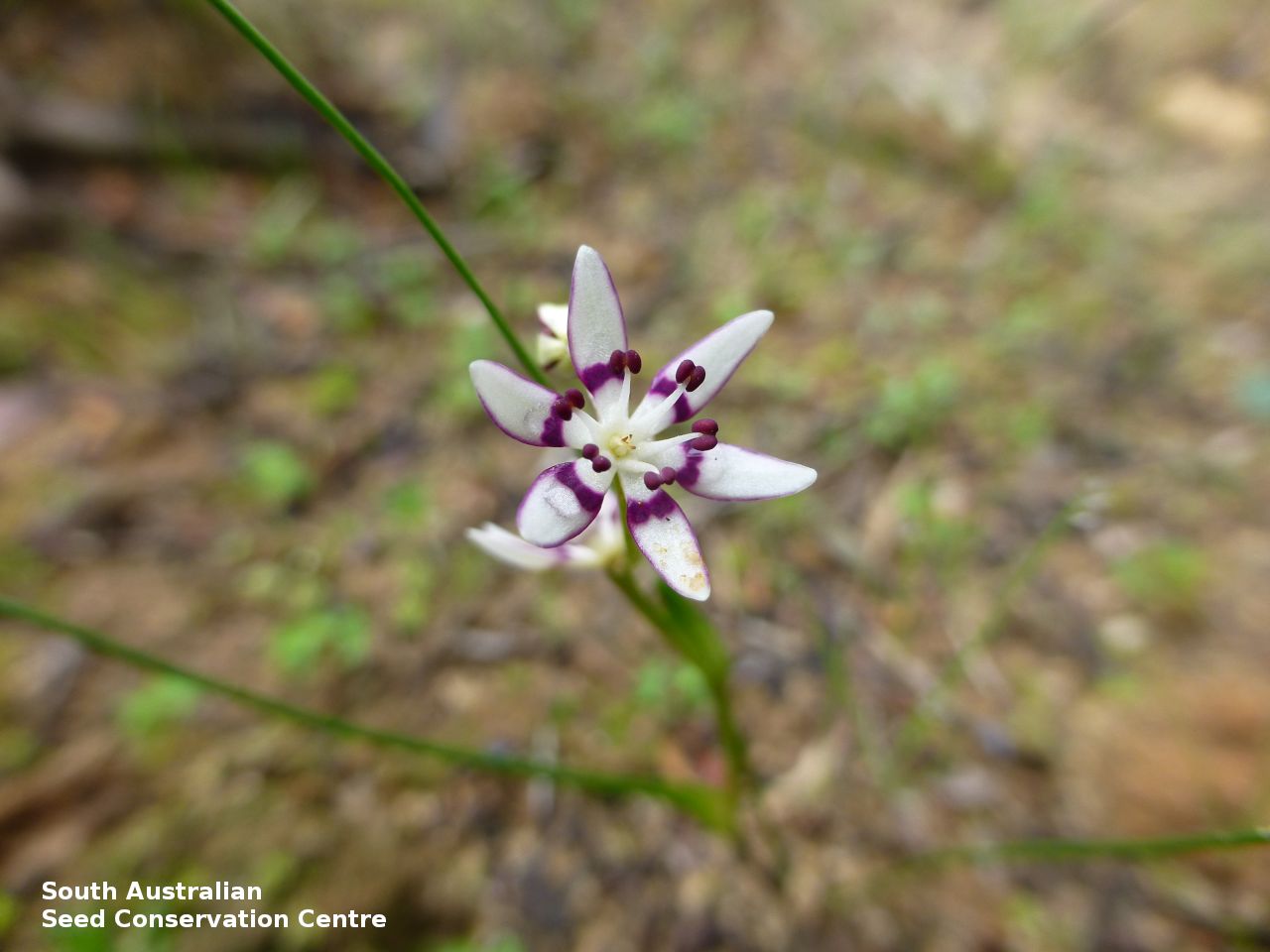
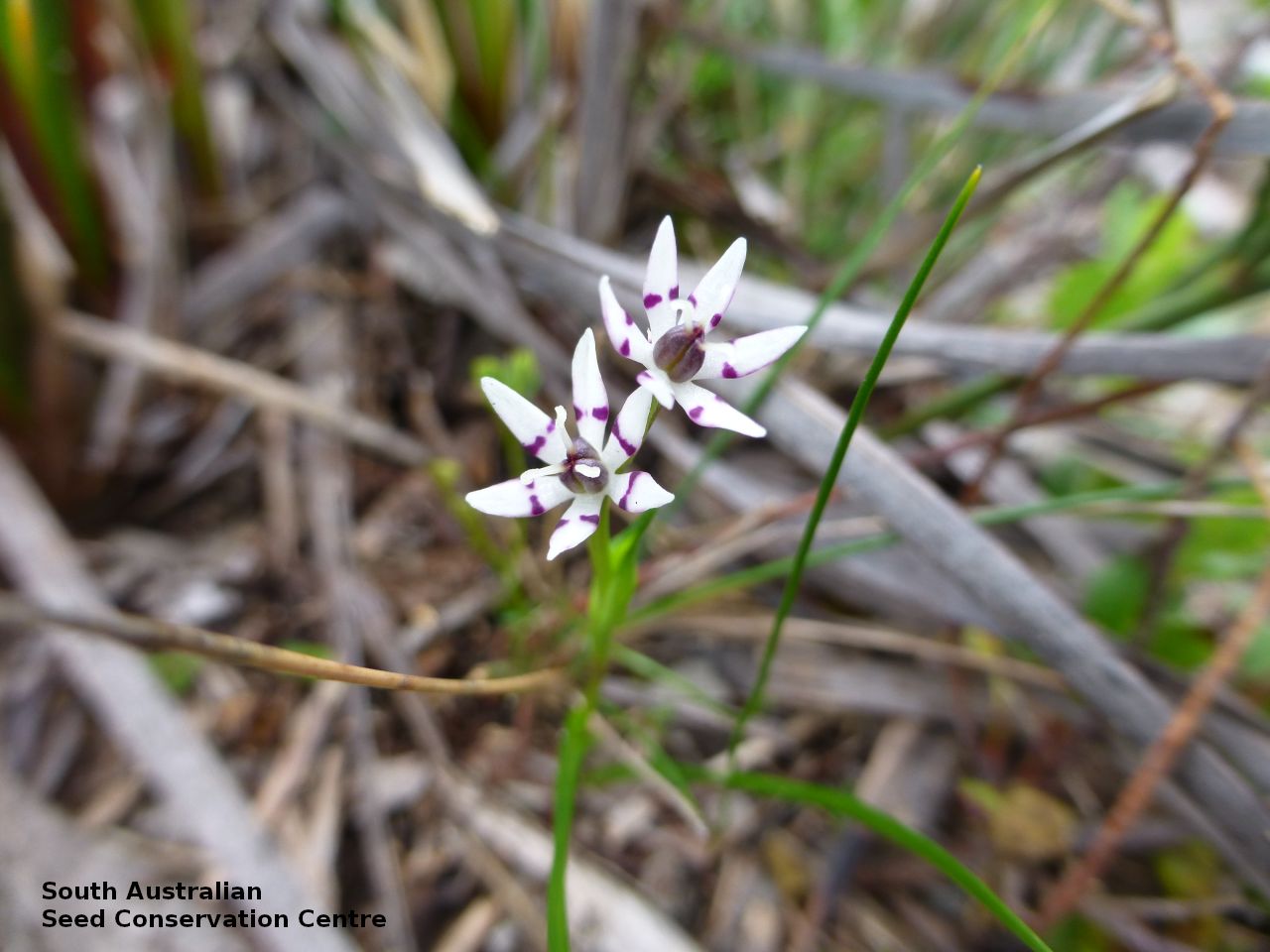
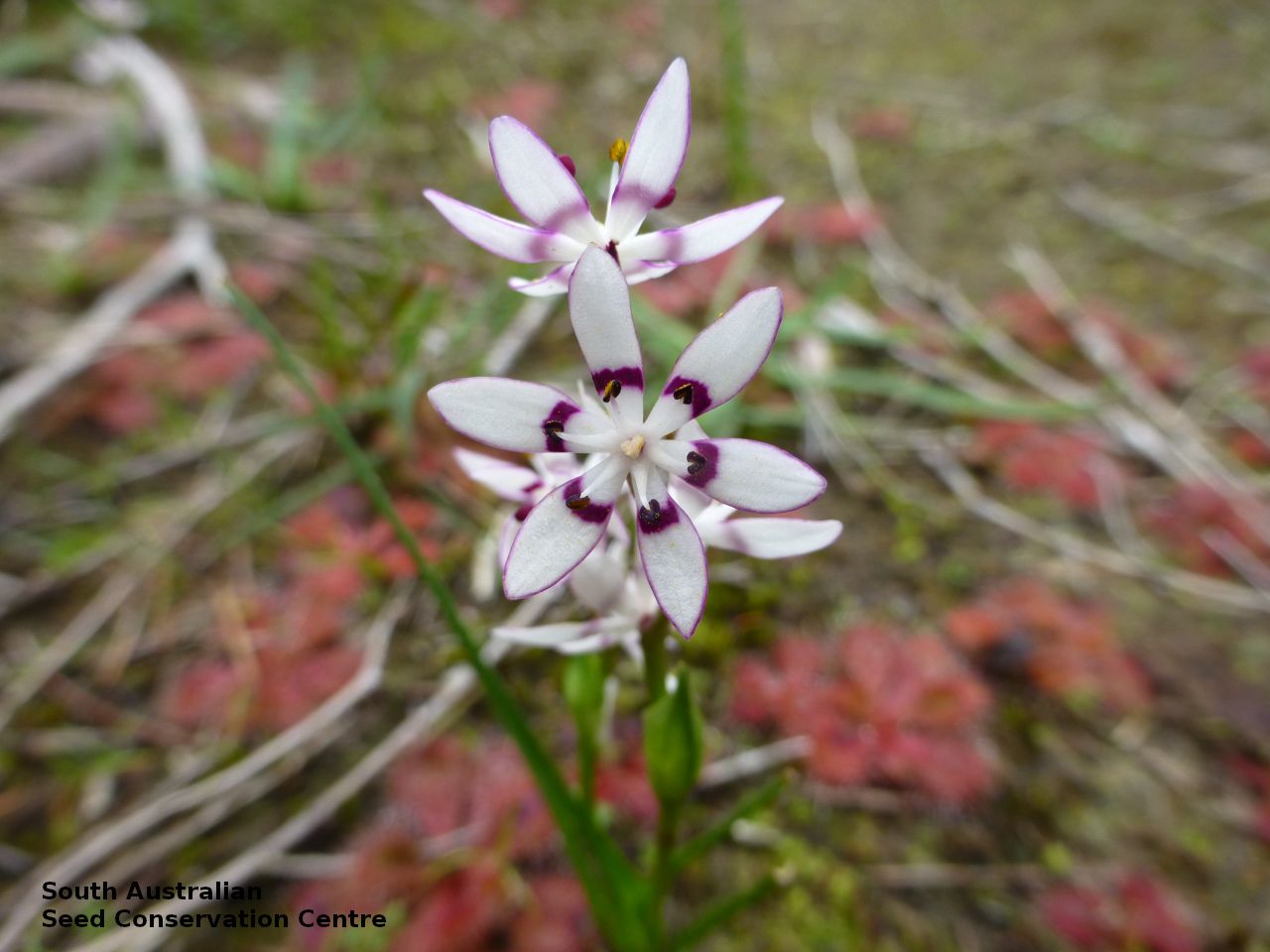
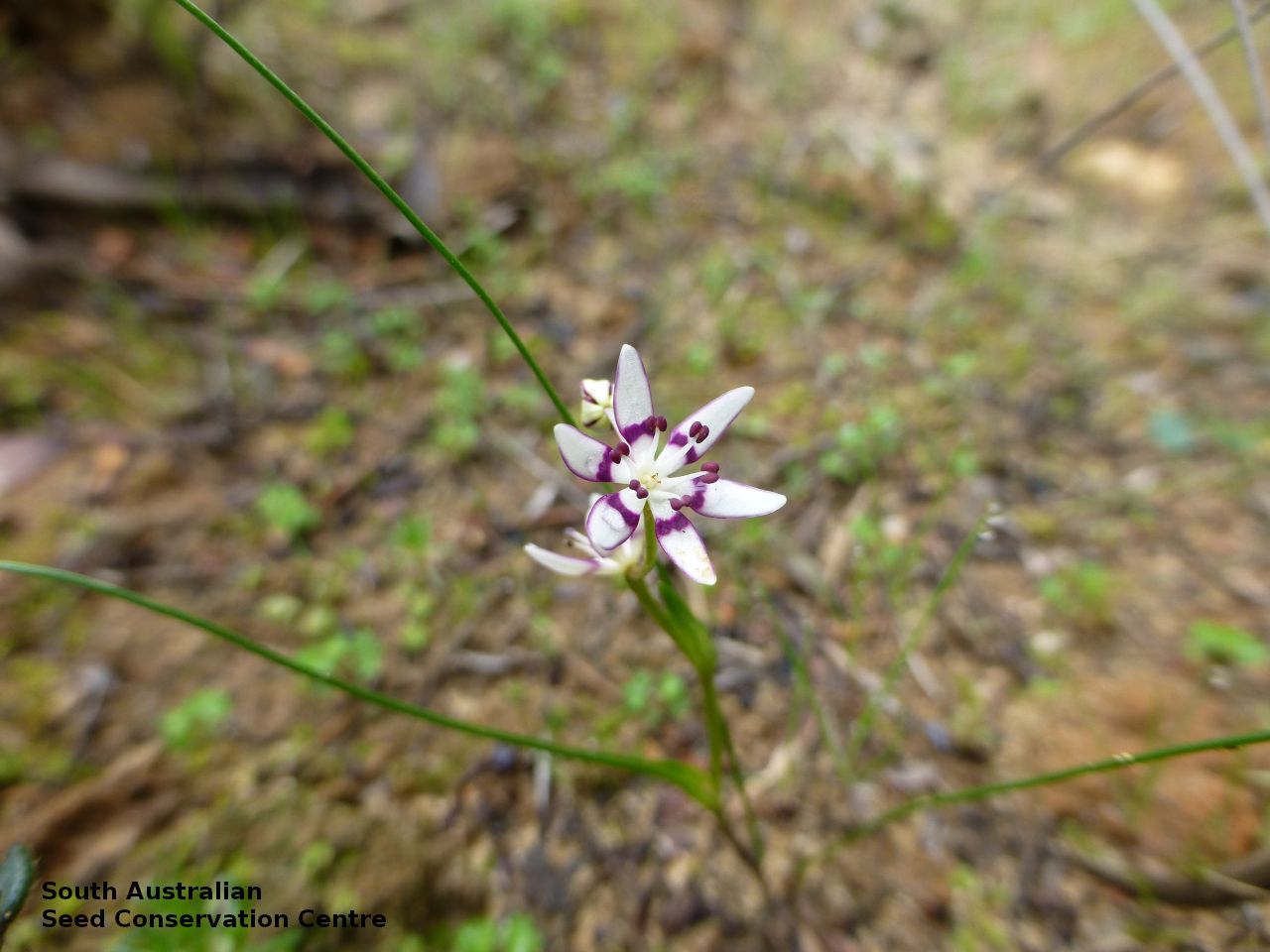
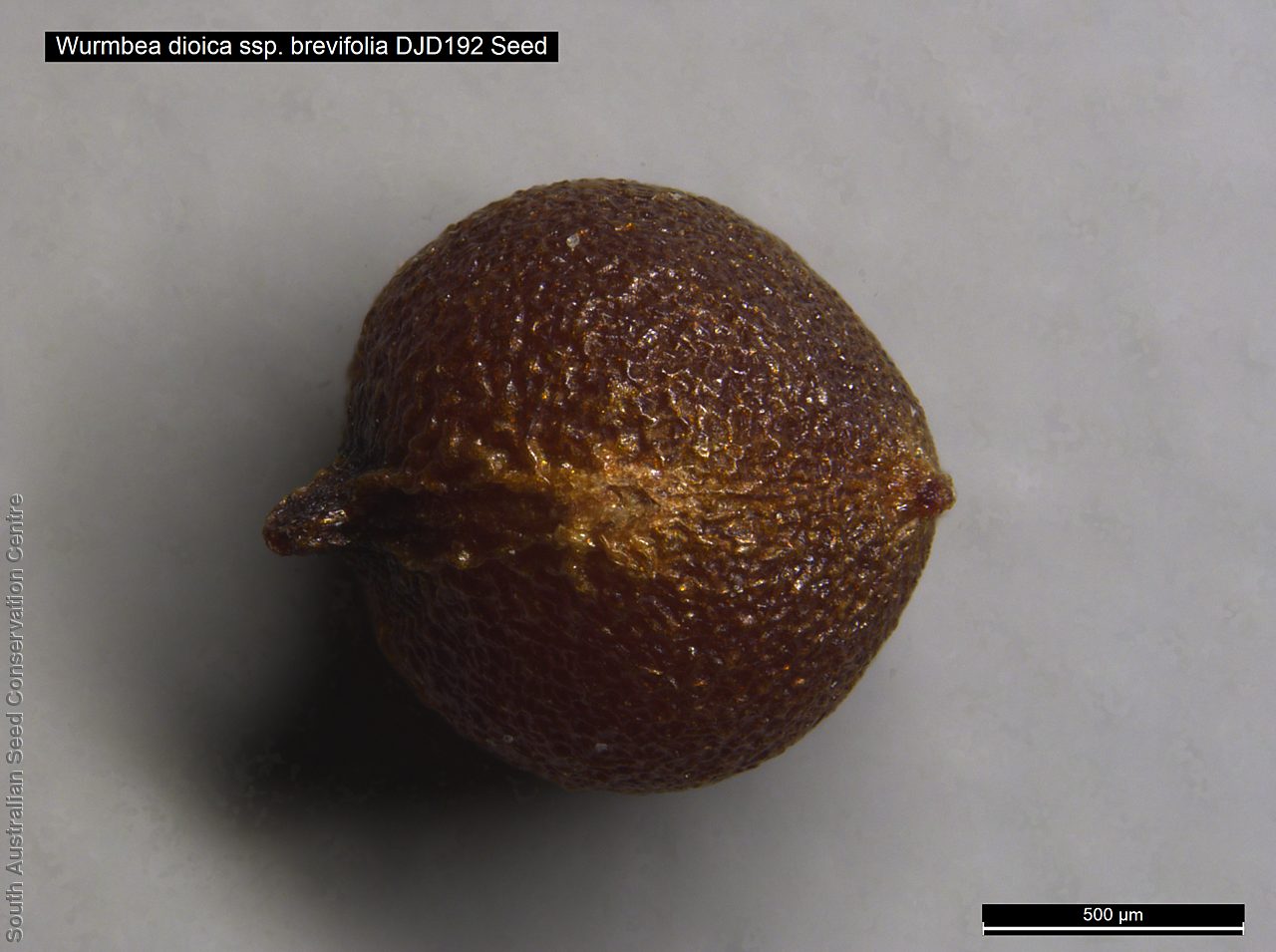
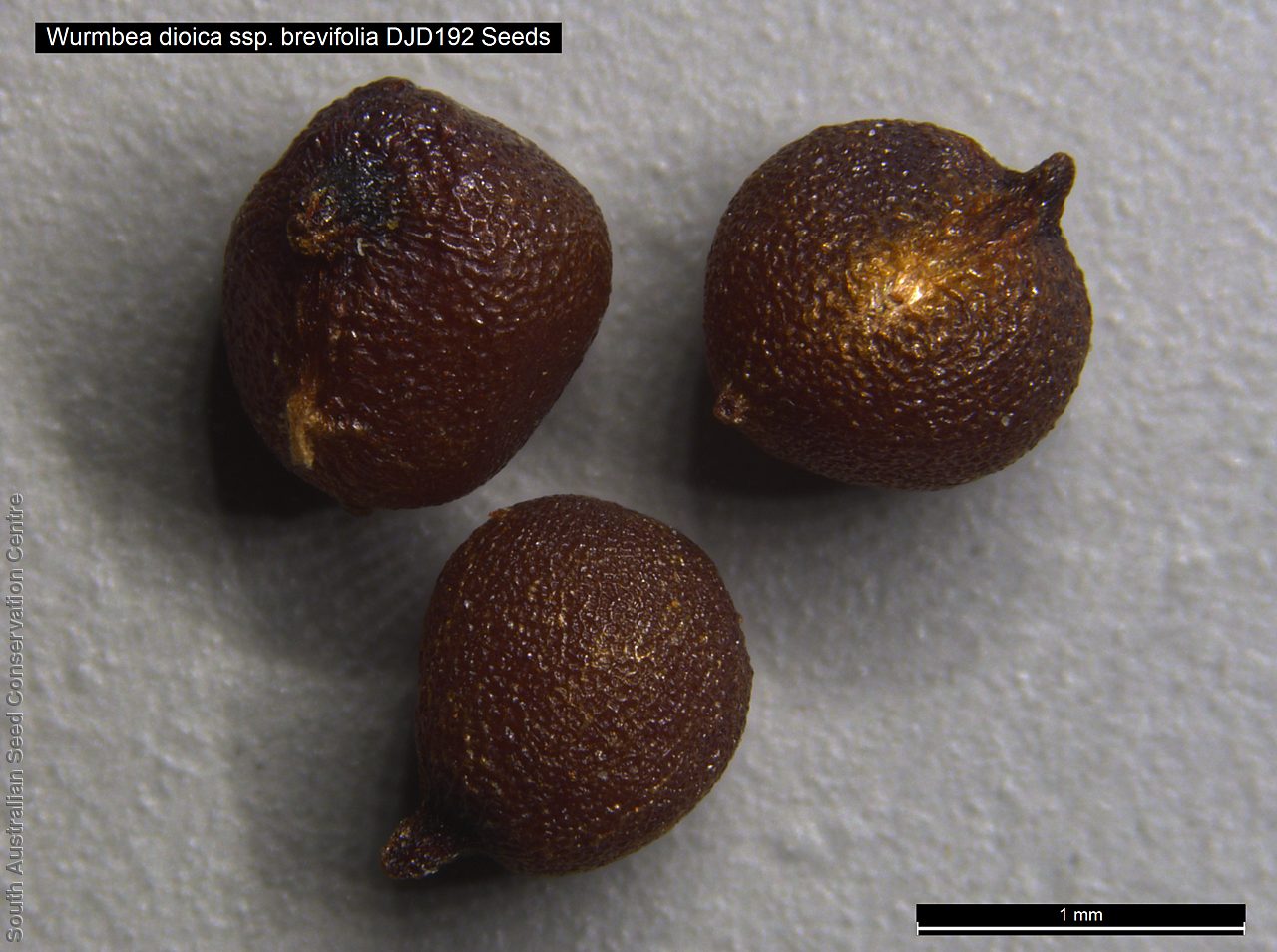
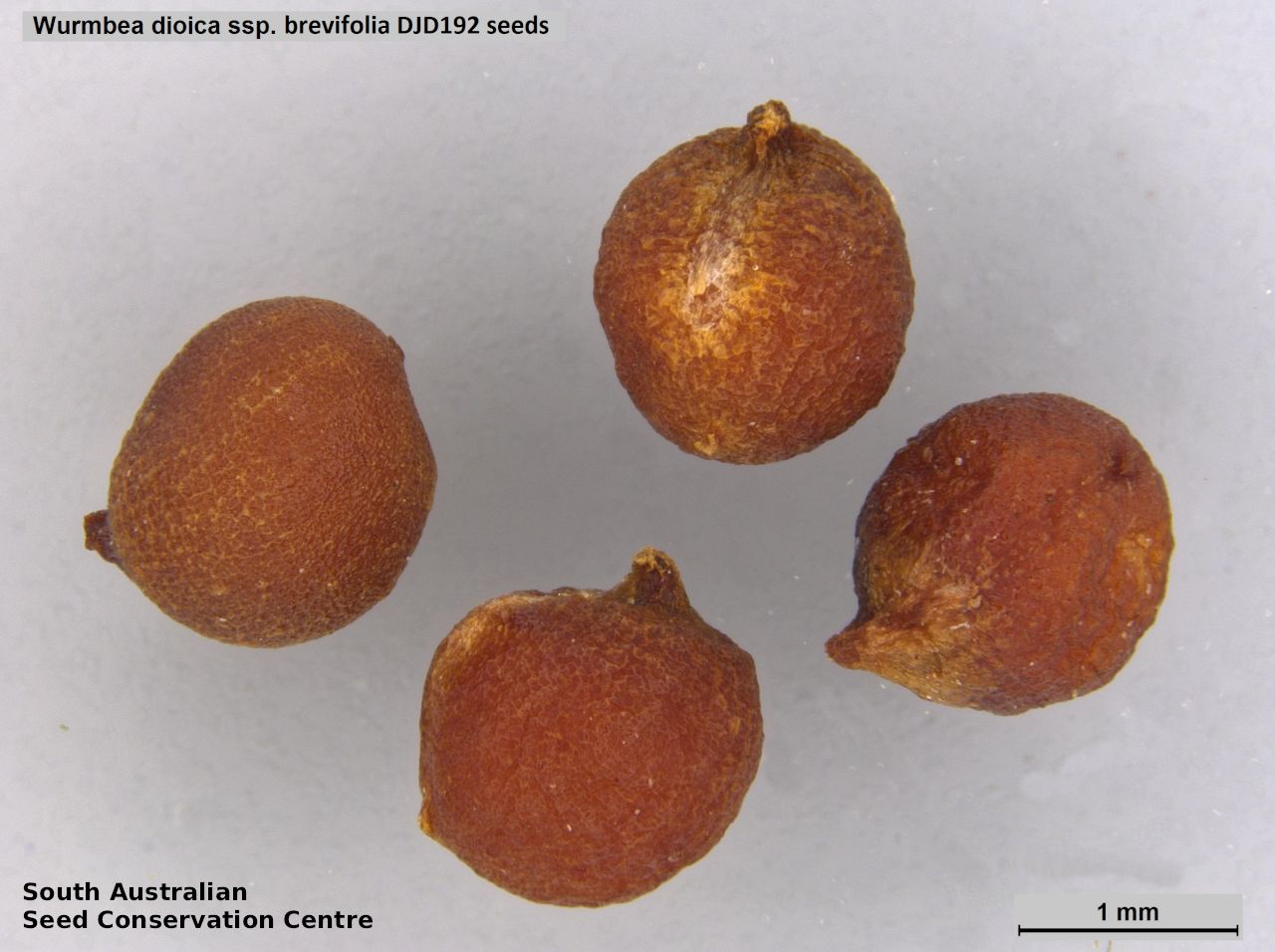

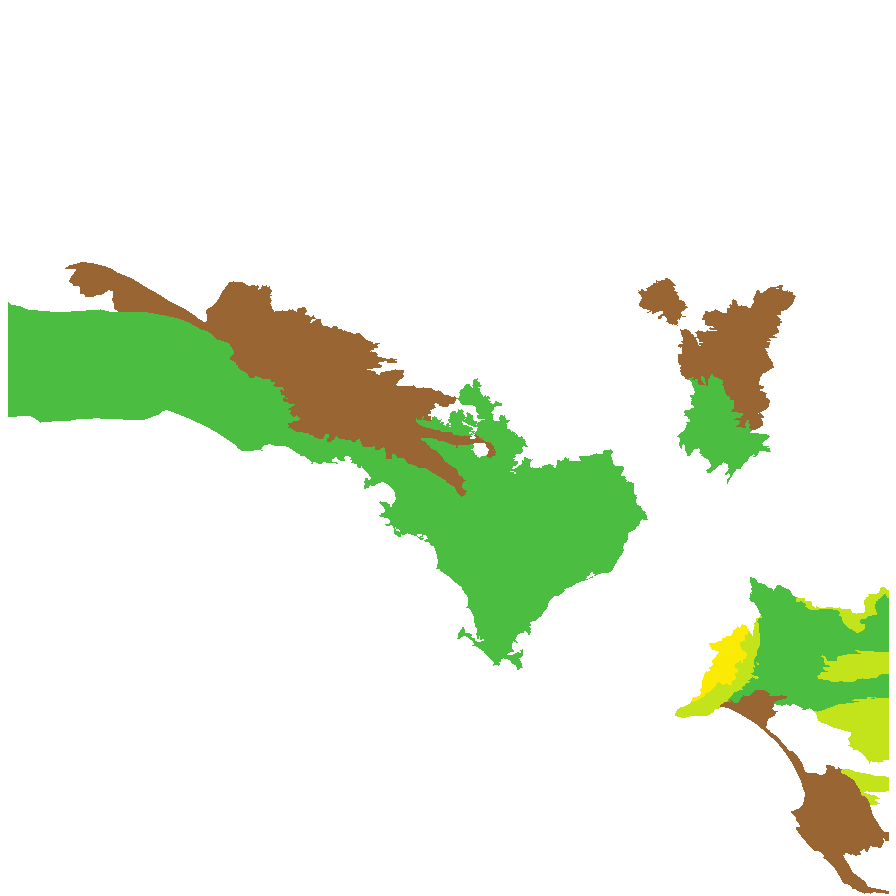
Botanical art
Prior names
Wurmbea dioica ssp. Short upper leaf (S.WilliamsCBP23)
Common names
Pink-edged Star-lily
Early Nancy
Early Star-lily
Etymology
Wurmbea name after Friedrick Wilhelm von Wurmb, merchant and botanist in 18th century Batavia (Jakarta). Dioica from Latin meaning two houses; referring to the species having male and female flowers on separate plants. Brevifolia from the Latin 'brevis' meaning short and 'folium' meaning a leaf; referring to the subspecies comparatively short upper leaf.
Distribution and status
Found in the southern part of South Australia, growing in wide range of habitats from coastal limestone and mallee, to mountain tops and rock outcrops. Also found in New South Wales and Victoria. Native. Common in South Australia. Common in the other states.
Herbarium regions: Nullarbor, Flinders Ranges, Eastern, Eyre Peninsula, Northern Lofty, Murray, Yorke Peninsula, Southern Lofty, Kangaroo Island, South Eastern, Green Adelaide
NRM regions: Adelaide and Mount Lofty Ranges, Alinytjara Wilurara, Eyre Peninsula, Kangaroo Island, Northern and Yorke, South Australian Arid Lands, South Australian Murray-Darling Basin, South East
AVH map: SA distribution map (external link)
Plant description
Dioecious herb to 20 cm high. Leaves 3, alternate, the lowest leaf linear-lanceolate, elongate, to 15 cm long and 5 mm wide, erect, middle leaf similar or shorter and with an inflated base, upper leaf just below the inflorescence, somewhat ovate and swollen to 2 cm long, as wide as long, not elongated as in the other leaves. Inflorescence spike with 1–6, unisexual, rarely bisexual flowers, female flowers distinctly smaller, male flowers white or cream, female flowers often turning pink with age, tepals more rounded, nectary a single continuous horizontal band of purple, stamens on male plants only, white, anther purple, ovary ovoid, often turning purple. This subspecies differ from the other two subspecies found in South Australia by the short, ovate uppermost leaf that lacks an elongated apex, and pink-edged tepals. Flowering between June and September, usually earlier than W. dioica ssp. dioica where the two grow together. Fruits are brown papery ovoid capsule containing many seeds. Seed embryo type is linear under-developed.
Seed collection and propagation
Collect seeds between August and November. Collect mature capsules, those turning pale straw colour and containing hard brown seeds. Place the capsules in a tray and leave to dry for two weeks. Then rub the capsules gently by hand to dislodge the seeds. Use a sieve to separate the unwanted material. Store the seeds with a desiccant such as dried silica beads or dry rice, in an air tight container in a cool and dry place.
| Location | No. of seeds (weight grams) | Number of plants | Date collected | Collection number Collection location | Date stored | % Viability | Storage temperature |
|---|---|---|---|---|---|---|---|
| BGA MSB | 2,000 (1.55 g) 2,000 (1.55 g) | 100+ | 5-Nov-2005 | DJD192 Eyre Peninsula | 10-Aug-2006 | 50% | -18°C |
| BGA | 420 (0.6 g) | 16-Oct-2018 | Potters Scrub Southern Lofty | 24-Apr-2019 | 100% | -18°C |
Number of plants: This is the number of plants from which the seeds were collected.
Collection location: The Herbarium of South Australia's region name.
% Viability: Percentage of filled healthy seeds determined by a cut test or x-ray.